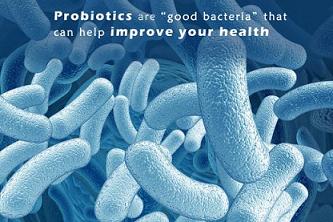
From time to time the evidence for the health benefits of certain nutritional therapies accumulates to such an overwhelming that mainstream medicine cannot overlook it. Such is the case with probiotics, generally known as “friendly bacteria” or “good bacteria”. The term probiotic actually means “for life”, as these healthy live bacteria or yeasts are essential to the functioning of the human body. The World Health Organization and the Food and Agriculture Organization of the United Nations define probiotics as “live microorganisms, which, when applied in adequate amounts, confer a health benefit on the host.” Probiotics are widely available in foods and supplements.
It was Dr. Eli Metchnikoff, a colleague of Louis Pasteur’s, who did the first, innovative work in study regarding Lactobacilli and also other “good” bacteria. Dr. Metchnikoff was awarded the Nobel Prize in 1908 for discovering that these bacteria played a significant role in immunity. Most disease, he surmised, begins in the digestive tract. When the “good” bacteria were not successfully controlling the “bad” ones, Dr. Metchnikoff labeled the condition dysbiosis, which simply means that the bacteria were not living in mutual harmony. His study led to the understanding we have today of the numerous benefits of the good bacteria and the importance of their role in balancing the “bugs”.
It is impressive to realize that Acidophilus and Bifidobacterium, as well as the other friendly flora, are part of the 100 trillion bacteria that live together in the human digestion system. All told, these bacteria comprise up to 4 lbs of our body weight!
This fertile colonization of the human body begins well before birth. A baby enters the world with a measure of both good and potentially harmful bacteria. With the very first breath, an infant inhales bacteria from the environment, bringing those “bugs” into the mouth and mucous membranes. After that the bacteria go on to colonize the rest of the body.
There after, the balance of bacteria is in a continuous state of change. Breastmilk provides beneficial bacteria, so as long as a child is nursing, he or she has the benefit of an added boost. Aided by the friendly flora in mother’s milk, Acidophilus and other beneficial bacteria established their very own territories where they act to avoid, the potentially harmful accumulation of bugs which might attack the body.
Recently, researchers have come to understand most of the chemical and biological reactions that characterize Acidophilus and other beneficial bacteria. Acidophilus produces an acidic environment, which inhibits the reproduction of many harmful bacteria. Acidophilus also produces, substances called bacteriocins, which function as natural antibiotics to eliminate harmful microorganisms. Together with other friendly flora, Acidophilus also stimulates the immune system by increasing antibody response in the mucous tissues.
Also, friendly bacteria help generate what are known as short-chain fatty acids. These fatty acids are essential as they assist the regeneration of colon cells. They also have anticancer effects.
Acidophiltts and also the friendly flora of the digestive tract help digest foods in the colon, particularly undigested fiber from fruits and vegetables. They assist to digest milk sugar and encourage regular bowel movements. Acidophilus also functions prevent the growth of H. pylori, a bacteria implicated in many cases of stomach ulcers.
Many medical doctors have some understanding about the benefits of friendly flora, other rewards are less well recognized. For example, many physicians are unaware that Acidophilus and the other good flora help produce vitamins in the human body. These include vitamins B2, B3, B5, Bl2, biotin, and vitamin K. Probiotics are also important for proper absorption of minerals in the small intestine.